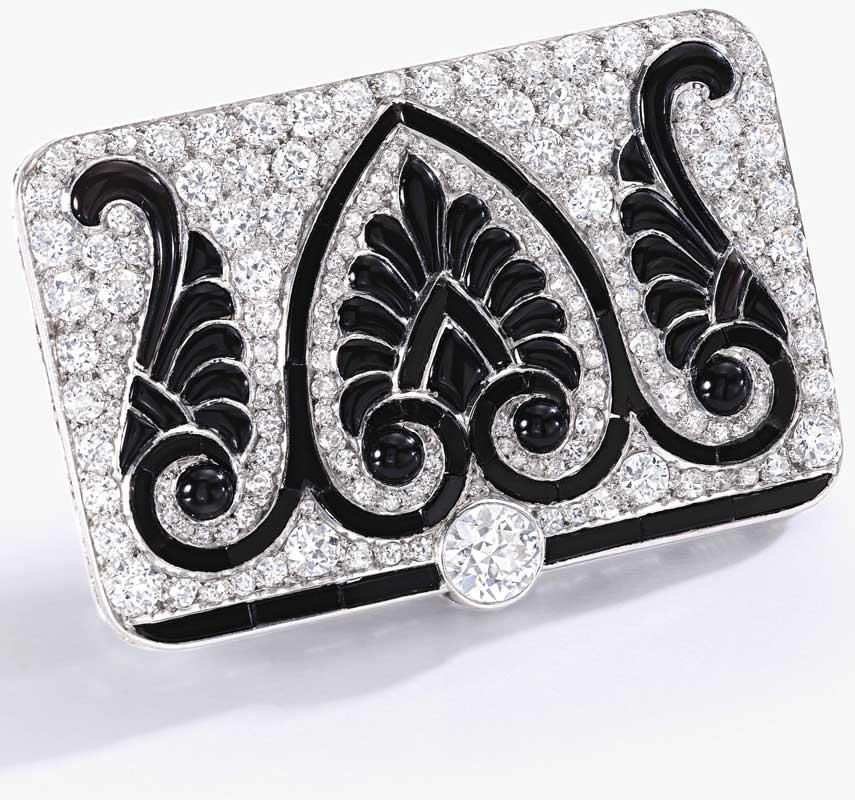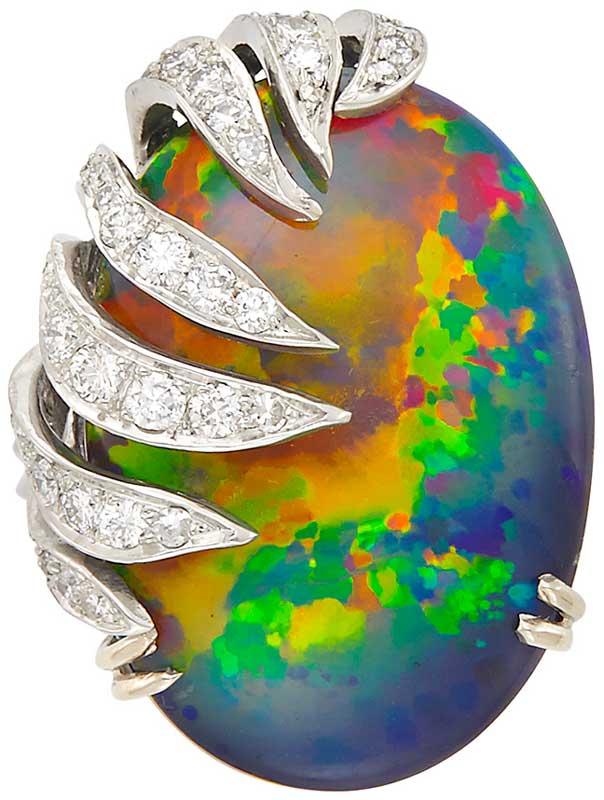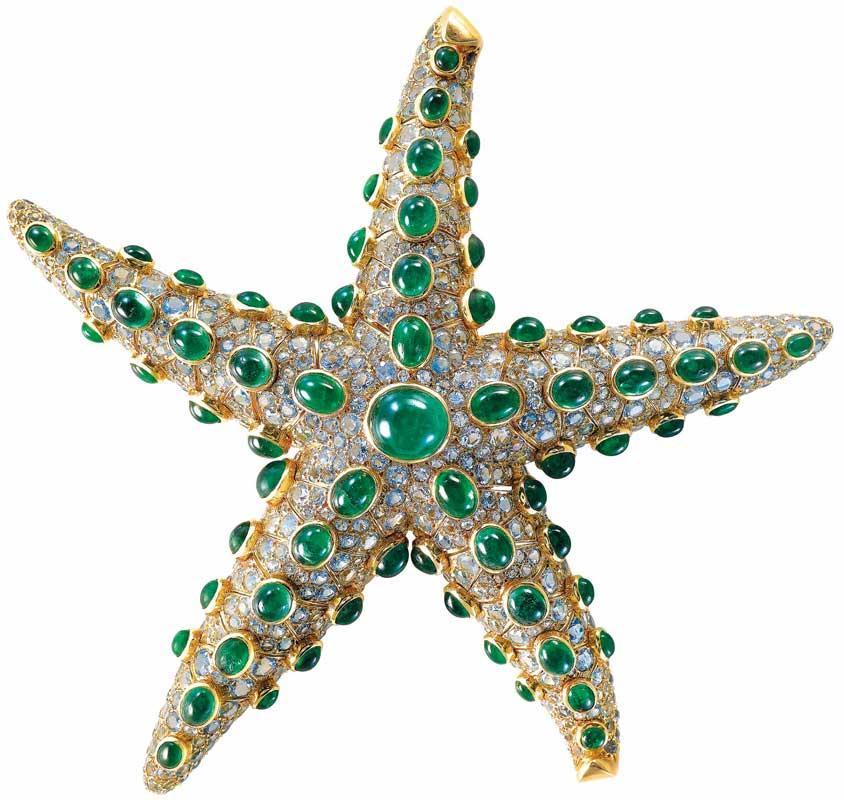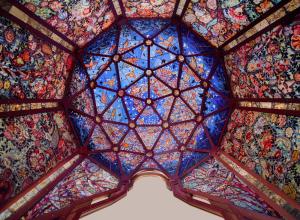
Sting Like a Dragonfly


Sting Like a Dragonfly
This turn of the 20th century necklace and comb combination by René Lalique embodies several aesthetic periods and ideas, its worth emanating from the design and make of the jewel, rather than the intrinsic value of its materials. Brown enamel dragonflies make up the central motif and comprise the main body of the work, flitting around a large pear-shaped citrine drop. Each dragonfly sports wings of plique-a-jour enamel, all of it suspended from a fine gold chain. The necklace was accompanied by a comb fitting, allowing the work to be worn as a hairpiece.
René Lalique was one of the iconic masters of the Art Nouveau period, capturing the fascination with winged creatures that often morphed into the female form typical of the period. In this piece, the citrine drop stands in for the female body, attracting the attention of the dragonflies.
Because jewelry of this period is fragile by nature, it needs special handling. The impeccable provenance of this piece undoubtedly contributed to its survival in fine condition. According to the catalogue, “This jewel was purchased in 1904 directly from René Lalique by the grandfather of the current owner as a present to his wife for the birth of their son.”
This was during the prime years of Lalique’s output. Born in France in 1860, he began his jewelry career in the 1880s. He was inspired in part by the plants and animals from the countryside where he grew up. Later, Lalique was caught up in the explosion of interest in Japonisme, which can clearly be seen in this necklace. When the arts of Japan were first seen in Europe in the mid-1800s, they were received like a hurricane that blew away the cobwebs of old design thinking.
Japonisme, with its delicate flowing lines, offered designers a clear break from the rigidity of the Victorian and Edwardian periods, and influenced much of Western culture. Included in this influence was the brief flowering of Art Nouveau, which swept over Europe and America a few decades later, roughly 1895-1910. Masses of jewels were created that depicted insects in anatomically correct detail, often combined with female nudes with flowing locks of hair. Some of the key design motifs were repeated so often by the jewelers of the period that the consuming public soon grew tired of them. Eventually Lalique, who was a master at enameling, a form of glass, moved onto working with glass itself.

A Scroll in Time
Cartier Onyx and Diamond Brooch, $143,624
Sotheby’s Geneva
May 15, 2018
Onyx and diamonds are combined in this brooch by Cartier, circa 1910. Although Cartier used these two materials in many pieces over the first half of the 20th century, this particular design appears to be unique and was rightly described as ‘rare’ in the catalogue. Black and white, as expressed in these two materials, affords the designer the opportunity to make a design truly stand out. This brooch is at once a formal piece, while still remaining playful, with arching loops at either side of the brooch and the central tree-of-life element adding to its appeal.
The fact that this piece sold for well over its pre-sale estimate is a tribute to its beauty and singularity. The background of the brooch is a surface paved with various sizes of round diamonds, with one large diamond set in a bezel at the edge of the brooch. Onyx carvings in the form of anthemia are placed within platinum settings superimposed on, and within, the bed of diamonds that covers the piece. Cartier used onyx extensively in its designs, especially in the Art Deco era, but the use of anthemia appears to have been a one-off for the firm. A traditional motif of radiating leaves originating in classical Greek art and design, the precise carving of the anthemia elements point to the highly skilled craftsmen who brought the design to life.

A World of Color
Black opal and diamond ring, $16,250
Doyle New York
June 13, 2018
Fine black opals are like fingerprints: no two are exactly alike. This stylish and unusual ring features an oval-shaped black opal weighing about 20.75 carats, partially wrapped in a fringe of diamonds set in platinum. The diamond elements are round and single-cut, weighing less than one carat in total. This unique ring fetched five times its pre-sale estimate.
The opal displays the characteristic mix of colors and shapes that are the hallmark of a very fine black opal. “Black” refers to the body color of the stone, derived from the trace elements of carbon and iron oxide within. These elements set the stage for the brilliant play of colors and shapes that seem to dance within the stone. The colors, in turn, are created by the diffraction of light. This quality emanates from the “bubbles” of silica mixed with water that form opal. The varying size of these bubbles determines the colors that are seen, blue being the most common, and red the rarest. These stones are true mysteries of the earth and are most often found in the Coober Pedy mines of Australia, while the finest opals are found in Lightning Ridge, Australia, some 800 miles to the east.

Seeing Stars
René Boivin Brooch, $151,898
Christie’s Geneva
May 16, 2018
The flexible arms of this whimsical and charming gem-set starfish brooch captivated buyers at Christie’s Geneva, to the tune of $150,000, soaring over the $100,000 high estimate. The brooch, dubbed “Etoile de Mer,” is set with graduated rows of cabochon emeralds and round aquamarines in 18k gold, with French assay marks. The title means “star of the sea” and this brooch seems ready to take a bow. Cabochon stones, with their buff tops, are often used in more casual jewelry, as in this design. The flexible arms allow the piece to adjust to the wearer’s shape, making it both comfortable and adaptable to various fabrics and styles of dress.
The firm of René Boivin is a renowned French maker dating back more than a century. Although its namesake owner died in 1917, the firm continued under the guidance of his widow and is well known for the designs of several women, including Suzanne Belperron, who began working there in 1919. Although no specific documentation surfaced, this piece is a near twin of another Boivin starfish set with rubies that was dated as mid-20th century. Both are versions of the original that was designed by Juliette Moutard in the 1930s. According to the book “René Boivin Jeweler,” the original model was made for the actress Claudette Colbert.
























